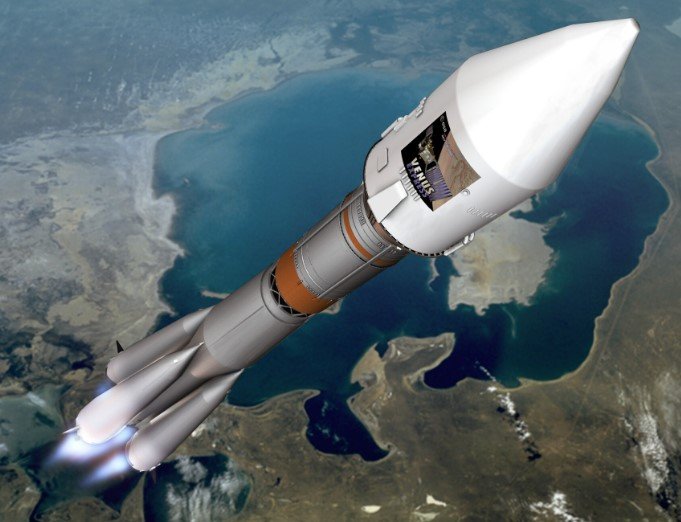Japan’s space agency has officially ended operations for the Akatsuki spacecraft, our only active probe around Venus, after losing contact in 2024. This marks the close of a 15-year mission that overcame major setbacks to deliver key insights into the planet’s atmosphere.
Mission Launch and Early Goals
Japan launched the Akatsuki spacecraft in May 2010 to study Venus, often called Earth’s sister planet due to its similar size and rocky makeup. The probe aimed to explore the thick clouds and extreme weather on Venus, using cameras and sensors to gather data on atmospheric patterns.
Engineers designed Akatsuki for a two-year main mission, but it lasted much longer. The spacecraft carried five cameras that worked in different wavelengths to map clouds, track winds, and look for signs of lightning or volcanic activity. This setup helped scientists understand why Venus spins slowly and has a runaway greenhouse effect.
Over time, the mission provided a steady stream of images and measurements. These findings showed how super-fast winds circle the planet, moving quicker than Venus itself rotates.

Overcoming Major Setbacks
The journey hit trouble right away. In December 2010, Akatsuki tried to enter Venus orbit but a main engine failure cut the burn short, sending the probe past the planet into a solar orbit.
Japan’s team did not give up. They used smaller thrusters to adjust the path over five years. In December 2015, Akatsuki finally slipped into an elliptical orbit around Venus, though not the one first planned.
This new orbit turned out helpful. It let the probe match the planet’s westward rotation, making it easier to study the atmosphere over long periods. Despite the delay, Akatsuki started sending back data that filled gaps in our knowledge of Venus.
Two cameras shut down in 2016 to save power, but the rest kept working. The spacecraft outlived its expected lifespan by years, proving the value of smart fixes in space exploration.
Key Scientific Discoveries
Akatsuki revealed details about Venus that changed how we see the planet. One big find was a possible gravity wave in the atmosphere, spotted in 2015, which might explain some weather oddities.
The probe also captured infrared images showing heat patterns and cloud movements. These helped map the super-rotation, where winds whip around at speeds up to 360 kilometers per hour.
Here are some standout achievements from the mission:
- Detected signs of active volcanoes through heat signatures.
- Tracked lightning in the dense clouds, confirming electrical storms.
- Provided data on sulfuric acid clouds that trap heat.
Scientists used this information to compare Venus with Earth, learning why one became a hot wasteland while the other supports life.
In total, Akatsuki orbited Venus for about eight years in its science phase, sending back thousands of images and readings.
Loss of Contact and Mission End
Contact with Akatsuki broke in late April 2024 during an orbit adjustment. The spacecraft entered a low-precision mode, and efforts to fix it failed over the next months.
On September 18, 2025, Japan’s space agency declared the mission over. The probe had aged beyond its design life, and recovery seemed impossible.
This leaves Earth with no active spacecraft around Venus for now. The loss highlights the challenges of long-term space missions, where hardware wears out in harsh conditions.
| Mission Milestone | Date | Description |
|---|---|---|
| Launch | May 2010 | Akatsuki blasts off from Japan toward Venus. |
| Failed Orbit Insertion | December 2010 | Engine malfunction sends probe past target. |
| Successful Orbit Entry | December 2015 | Adjusted path allows entry into Venus orbit. |
| First Major Discovery | December 2015 | Possible gravity wave detected in atmosphere. |
| Camera Shutdown | 2016 | Two cameras turned off to extend mission life. |
| Loss of Contact | April 2024 | Communication fails during orbit stabilization. |
| Mission Termination | September 2025 | Official end after failed recovery attempts. |
What Comes Next for Venus Exploration
With Akatsuki gone, attention turns to future missions. NASA plans the VERITAS orbiter for the late 2020s to map Venus’s surface in detail. Europe’s EnVision mission, set for 2031, will study the planet’s geology and atmosphere.
India and Russia also have Venus plans in early talks. These efforts could build on Akatsuki’s work, answering questions about the planet’s history and potential for past life.
Private companies like Rocket Lab aim to send small probes soon, possibly by 2025. This mix of government and private work might bring a new era of Venus study.
The end of Akatsuki reminds us of space exploration’s risks and rewards. It gathered data that will shape research for years.
Share your thoughts on this space milestone in the comments below, and pass this article along to fellow science fans.
